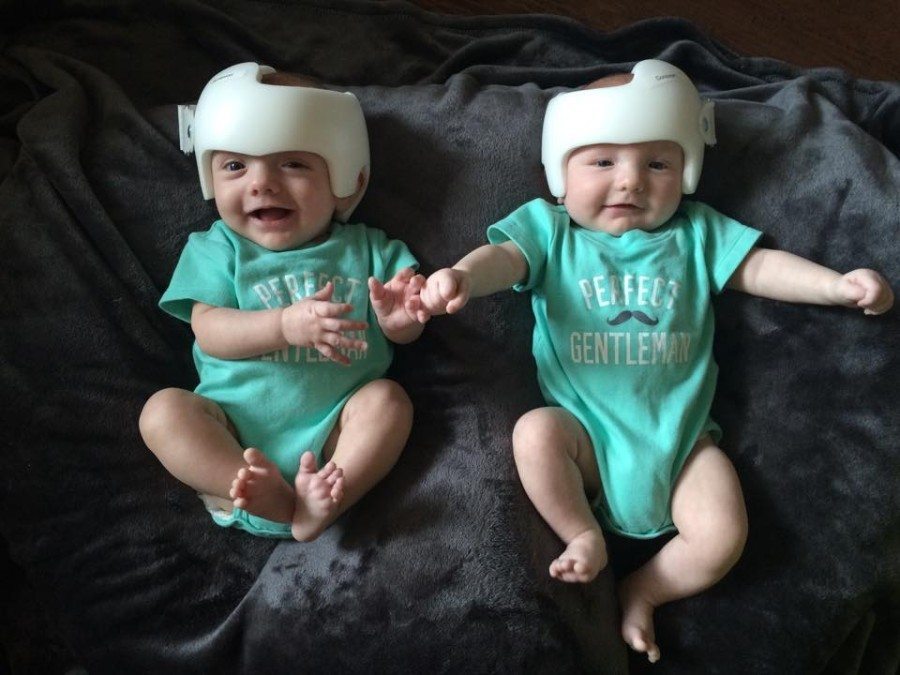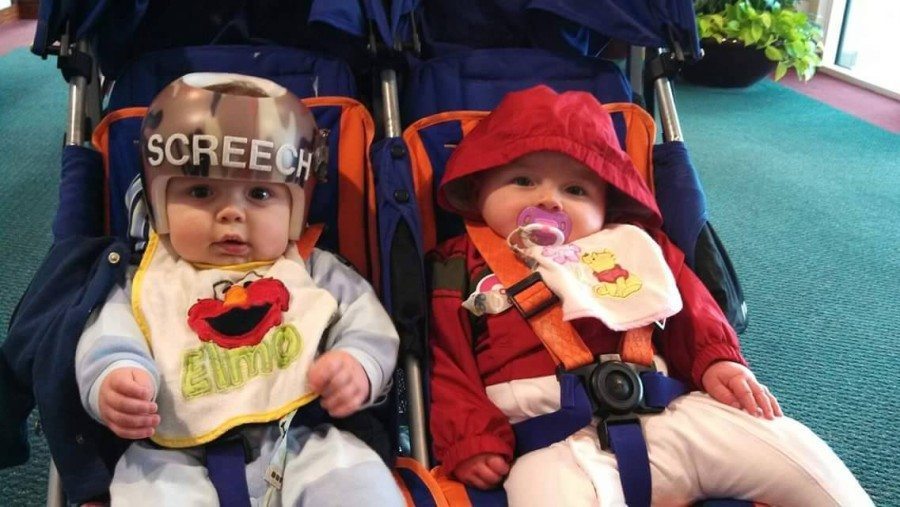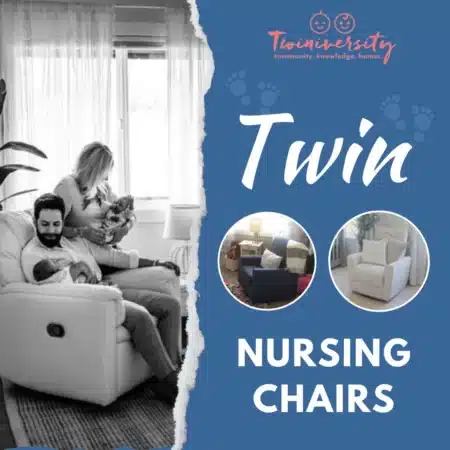Last updated on March 1st, 2024 at 04:25 pm



Why do some infants need a baby helmet? Learn why some infants and toddlers may need to wear a baby helmet, due to flattening of portions of the head in infancy, and what can be done to help.
One of the reasons you may see a baby or toddler wearing a baby helmet is plagiocephaly (or a misshapen head). There are actually three different types of misshapen heads, as causes of plagiocephaly are combined, and it’s not uncommon to see heads that illustrate two of the deformities.
Plagiocephaly literally means “oblique head”. It’s called a parallelogram deformity because if you look down on the infant’s head (bird’s-eye-view), that is the shape you will see. A Baby helmet is actually a cranial orthotic used to correct this deformity.
Some Plagiocephaly Facts From Cranial Technologies
Cranial Technologies has an Online Head Shape Assessment that you can do at home to see about therapies and possible use of a baby helmet.
In addition to Plagiocephaly, some kiddos might need a baby helmet because they have…
- Brachycephaly – something as simple as sleeping on the back can cause brachycephaly. The head flattens uniformly causing a wider and shorter shape. Increased head height is also common in children with brachycephaly.
- Brachycephaly with Plagiocephaly – This deformity occurs when there is a combination of brachycephaly and plagiocephaly present. Brachycephaly with plagiocephaly is positional and has become more prevalent since the “Back to Sleep” Campaign.
- Scaphocephaly – Scaphocephaly (Dolichocephaly) describes a head with a long, narrow shape. It is particularly common in premature babies who spend time in the NICU.
According to Cranial Technologies, about 80% of their patients see some kind of neck involvement. Torticollis is caused by the shortening of muscles in the neck. Particularly the Sternocleidomastoid (SCM) muscle. This can occur from placement in utero, the birth process or being constantly in the same position in car seats, swings, etc. and not having the opportunity to turn their neck to both sides. Often torticollis causes plagiocephaly since the child is favoring one side of the neck and pressure is always on the same side of the head. Occupational and physical therapists are involved in the treatment of torticollis. Treatment includes special stretches and repositioning. Many insurance companies require parents to try these techniques before they will cover the cost of the baby helmet.
Quick Facts About Torticollis
- Unilateral tightness or shortening (imbalance) of one or more of the cervical muscles (also known as “wry neck”)
- Causes the head to tilt to one side and the chin to rotate and point to the opposite shoulder resulting in limited neck range of motion
- Commonly linked to intrauterine constraint, birthing trauma, or positioning but can result from other underlying disorders
- Most often associated with SCM muscle dysfunction
- Can be congenital (CMT) or develop weeks/months later
What Causes Plagiocephaly?
The common causes are restrictive intrauterine environment (eg multiple fetuses – twins or triplets), congenital muscular torticollis, prematurity, back sleeping, infant car seats, carriers, bouncy seats and swings.
Being aware of preventative measures can help reduce the chance your child will develop positional plagiocephaly. Different repositioning techniques and adequate Tummy Time are keys to prevention and also help your baby meet developmental milestones. Another prevention measure for plagiocephaly and torticollis is repositioning. This is effective until four months of age.









